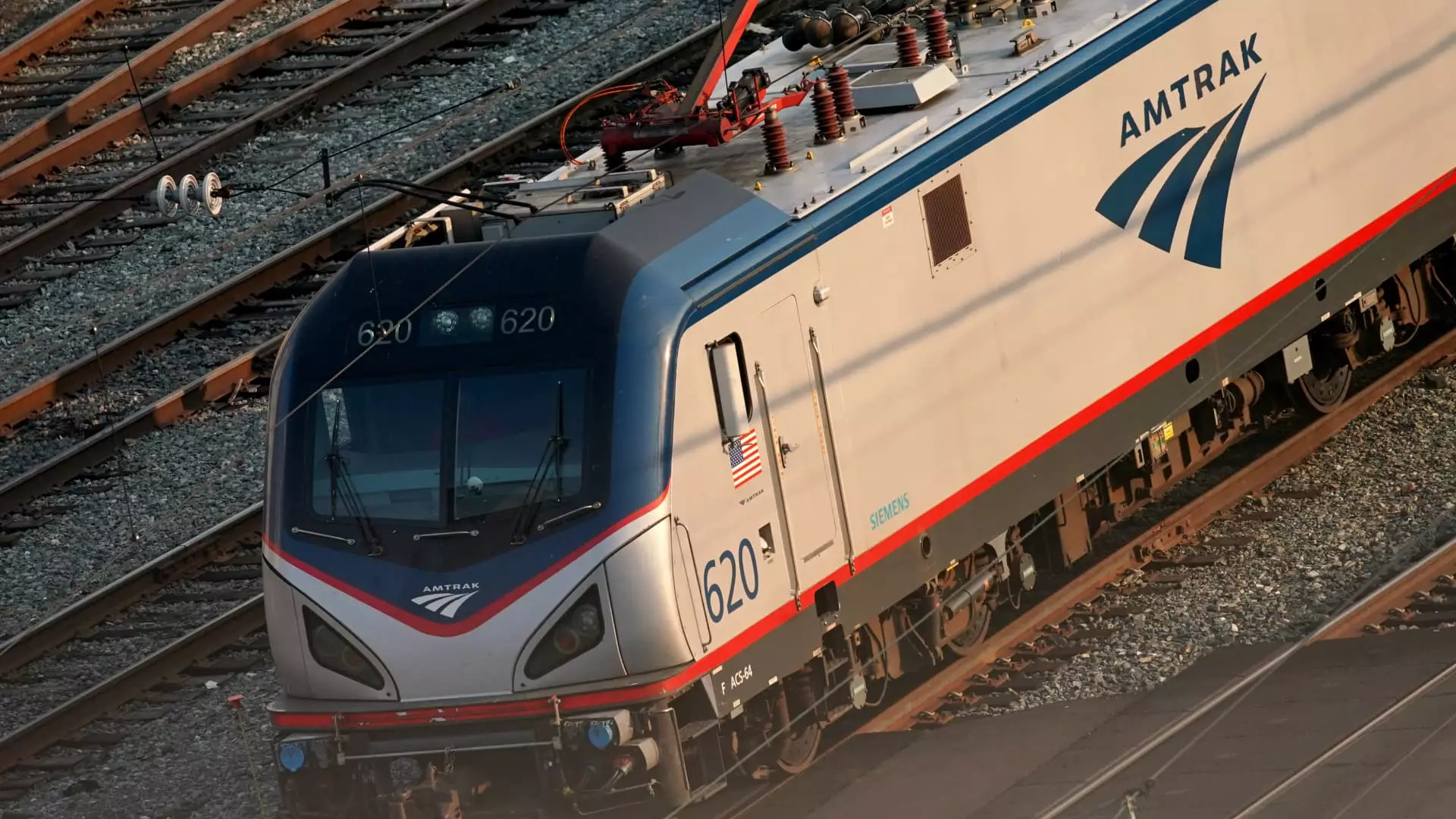As the travel industry rebounds from the impact of the pandemic and airfare prices continue to rise, an increasing number of travelers are considering trains as an alternative to planes. This shift can be attributed to several factors, such as cost-effectiveness, environmental benefits, and the overall travel experience. Amtrak, the government-backed U.S. rail service, has seen a surge in ridership as it strives to recover pre-pandemic levels and improve its operations. While trains may not completely replace air travel, they offer distinct advantages that are attracting more passengers, particularly in the Northeast corridor.
The Tradeoffs and Advantages
Trains are often perceived as a more affordable option compared to flights, offering better value for money. Additionally, they provide passengers with more legroom and a more comfortable travel experience. Moreover, trains have proven to be more environmentally friendly than air travel, which contributes to their growing appeal. The uncertainties surrounding the airline industry, including high-profile incidents and the ensuing safety concerns, have further driven travelers towards trains. Despite the longer travel times associated with train routes, when considering factors such as traffic, security lines, and boarding wait times, the total travel time tends to even out. This makes trains a viable choice, especially for journeys between nearby cities like New York and Washington, D.C.
A Frictionless Way to Travel
One of the main advantages of train travel is the convenience of accessible city-center train stations compared to airports located on the outskirts of towns. Passengers appreciate the seamless experience of train travel, as they can easily move around the train, stretch their legs, and enjoy the amenities provided, such as food cars. The ability to arrive at the train station just minutes before departure, instead of having to arrive at the airport hours in advance, is a significant time-saving factor. Although some delays may occur, they are often negligible compared to the disruptions frequently experienced in air travel. The overall satisfaction with train travel has led passengers like Leonor Grave to favor trains over flights, stating that it is a more enjoyable and grounded experience.
One compelling reason for travelers to choose trains is their positive environmental impact. Air travel contributes significantly to global carbon emissions, while train travel offers a greener alternative. The substitution of air travel with trains leads to a substantial decrease in greenhouse gas emissions. This reduction is particularly evident in areas where investment in green technology and public transportation is prioritized, as seen in California. The ability to work remotely while traveling by train also appeals to passengers like Chiara Dorsi, who chose a 19-hour Amtrak ride over a flight from Chicago to New Orleans. The affordability, comfort, and availability of Wi-Fi on Amtrak trains make it possible for passengers to work during their journey, making the travel time productive and valuable.
The Current State of Train Travel
Although American trains still lag behind the high-speed rail networks of Europe and Japan, the increasing attractiveness of train travel in the United States cannot be overlooked. Amtrak has reported a 24% increase in total ridership in 2023 compared to the previous year, indicating a steady recovery from the pandemic’s impact. The Northeast Corridor, which spans from Washington, D.C., to Boston, has experienced a notable bounce-back in ridership and revenue. However, the on-time performance of trains has been affected since the pandemic, with delays and disruptions being more prevalent. Amtrak acknowledges the need to address these issues and remains committed to improving service reliability and safety.
Amtrak has been actively investing in the expansion and enhancement of its train routes, bolstered by funding from the White House. The company plans to double its ridership by 2040, with a focus on upgrading trains, developing infrastructure, and improving train stations. These improvements will be crucial in revolutionizing train travel, making it a gamechanger in the industry. Reinforcing track beds, rebuilding bridges, and enabling trains to run faster are all part of Amtrak’s long-term vision for the future.
The current shift towards trains as a preferred mode of travel showcases the changing dynamics of the travel industry. With cost-effectiveness, environmental benefits, and an overall frictionless experience, trains are becoming an attractive alternative to planes. While there are improvements to be made and challenges to overcome, Amtrak and the growing popularity of train travel paint an exciting future for domestic transportation. As passengers continue to choose trains over flights, the development of train routes and connectivity across the country will undoubtedly thrive.


Leave a Reply